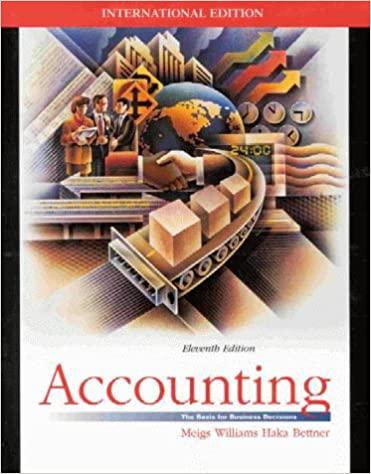Question
Power Generation Inc . has just announced the March 1, 2022 expansion of the R.H. Saunders Generating Station in the Ottawa/St. Lawrence area. Its personnel
Power Generation Inc. has just announced the March 1, 2022 expansion of the R.H. Saunders Generating Station in the Ottawa/St. Lawrence area. Its personnel department has been directed to determine how many technicians need to be hired and trained for the March - June period. The station currently employs 350 fully trained technicians and projects the following personnel needs:
| MONTH | PERSONNEL HOURS NEEDED |
| March | 40,000 |
| April | 45,000 |
| May | 35.000 |
| June | 50,000 |
By Ontario regulations, a technician can actually work no more than 130 hours per month. Negotiated policy at Power Generation Inc. also dictates that layoffs are not acceptable in the months when the station is overstaffed. So, if more trained employees are available than are needed in any month, each worker is still fully paid, even though he or she is not required to work the 130 hours. Training new employees is an important and costly procedure. It takes one month of one-on-one classroom instruction before a new technician is permitted to work alone in the facility. Therefore, Power Generation Inc. must hire trainees one month before they are actually needed. Each trainee teams up with a skilled technician and requires 90 hours of that employees time, meaning that 90 hours less of the technicians time are available that month for actual work. Personnel department records indicate a turnover rate of trained technicians at 5% per month. In other words, about 5% of the skilled employees at the start of any month resign by the end of that month. A trained technician earns an average monthly salary of $4,000 (regardless of the number of hours worked, as noted earlier). Trainees are paid $2,000 during their one month of instruction. Power Generation Inc. wants to find the best staffing schedule for the four-month period.
A SOLVER formulation and solution are given on page 7. An algebraic formulation is given below:
Let Si = number of trained technicians available at the start of month i
Let Ti = number of trainees (new technician) hired at the start of month i.
Where i=1,2,3,4 for March, April, May and June
Minimize Z = $4,000S1 + 4,000S2 + 4,000S3 + 4,000S4 + 2,000T1 + 2,000T2 + 2,000T3 + 2,000T4
subject to:
130S1 90T1 40000 Work requirements in March
130S2 90T2 45000 Work requirements in April
130S3 90T3 35000 Work requirements in May
130S4 90T4 50000 Work requirements in June
S1 = 350 Number of trained technicians in March
-.95S1 + S2 T1 = 0 Compute number of trained technicians in April
-.95S2 + S3 T2 = 0 Compute number of trained technicians in May
-.95S3 + S4 T3 = 0 Compute number of trained technicians in June
All variables 0
Each formulation question below is independent of the others; this means that when you are answering any part, ignore the previous parts. In each part the formulation is altered. You may either write out a complete formulation for the altered problem, or better yet, just clearly state exactly what changes need to be made in the above formulation. Please present your answer using the algebraic format rather than as an EXCEL table.
NOTE: Do not use the optimal values of the decision variables to in any way guide you in your answers to the formulation problems below.
- The turnover rate for trained technicians has decreased to 4% per month. (3 points)
(b) At the start of April, up to 10 trained technicians will be released by a nearby company, and can be hired for the usual cost of $4,000 to start work immediately at the start of April. (5 points)
- The number of trainees trained in April and May can differ by at most 20. (4 points)
- Only 80% of the trainees in a given month pass the qualification test. The rest are fired at the end of the month of training. (3 points)
- The Human Resources Department (HRD) motivational experts feel that a trained technician who is not fully occupied with work will tend to get lazy. To combat this, they have provided life skills training courses for these idle technicians. The cost to the company for these courses is $15 for each hour of idle time. For example, if in a given month all except 2 of the trained technicians are fully occupied, and these two are idle for the whole month, then there would be 260 idle hours in the month, for a cost of $15(260). (6 points)
Step by Step Solution
There are 3 Steps involved in it
Step: 1

Get Instant Access to Expert-Tailored Solutions
See step-by-step solutions with expert insights and AI powered tools for academic success
Step: 2

Step: 3

Ace Your Homework with AI
Get the answers you need in no time with our AI-driven, step-by-step assistance
Get Started


